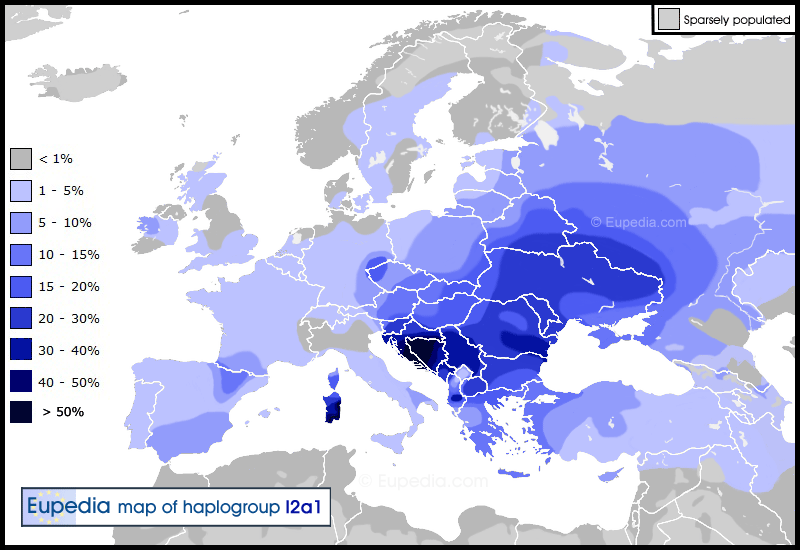Maybe the Croats where the goths, Avars and other non-slavic people which moved south after the slavic migration into central Europe after 500AD
There are a number of relevant conclusions that can be drawn from the croatian genetic data.
First of all it gives strong support to the theory that the region of modern day Croatia served as a refuge for northern populations during the
last glacial maximum (LGM). Eastern Adriatic coast was much more to the south, northern and western parts of that sea were steppes and plains, while modern Croatian islands (rich with the archeological sites from Paleolithic) were hills and mountains. After the LGM, the offspring of these survivors (haplogroup I) repopulated much of central-eastern and southeastern Europe. Those who remained in the Balkans were the direct male-line ancestors of about 45% of modern day Croats in Croatia and 73% Croats in Herzegovina.
[37]
It can be said that the Croats are "the most European people", as no other people have such high shares of this major (and likely the only) Paleolithic European haplogroup.
The second conclusion that can be drawn is that the theory of an Iranian origin has little genetic support. Modern-day Iranians have a significantly different haplogroup distribution, although Iranic speaking communities have lived in eastern Europe. The low frequency of
Anatolian haplogroups suggests that agriculture spread into the region of Croatia primarily by way of cultural contact.
[39]
And the third conclusion from the genetic evidence points to the fact Croats are genetically heterogeneous, pointing to a high degree of mixing of the newly arrived medieval migrant tribes (such as Slavs) with the indigenous populations that were already present in the region of the modern day Croatia.
[40] Hence, most modern day Croats are directly descended from the original European population of the region and have lived in the territory by other names, such as
Illyrians and their forebears. These original inhabitants also served an important role in re-populating Europe after the last ice age





